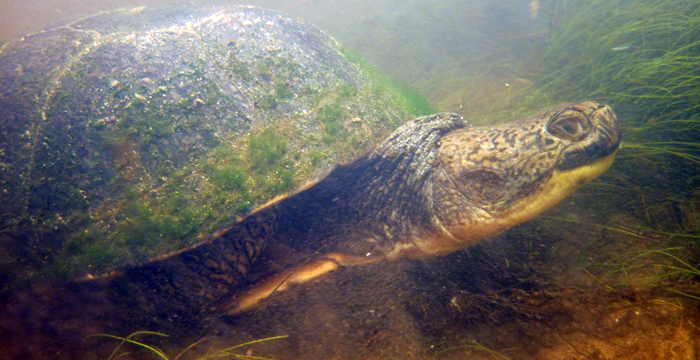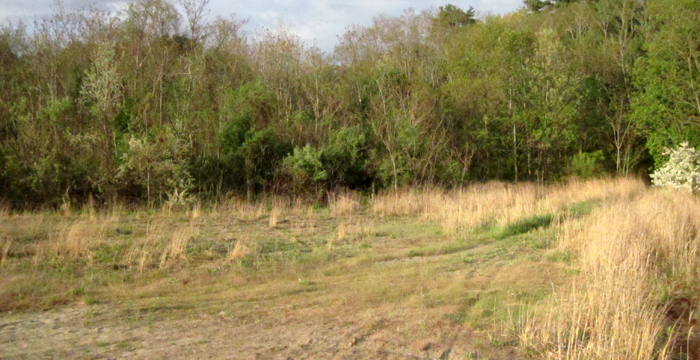Merrimack and Connecticut RiversFOCAL SPECIES: Blanding's Turtle (Emydoidea blandingii); Wood Turtle (Glyptemys insculpta); Spotted Turtle (Clemmys guttata); Eastern Box Turtle (Terrapene carolina)
The Merrimack River Valley includes the small cities of Concord, Manchester, and Nashua, New Hampshire, and Leominster, Lowell, Lawrence, and Haverhill, Massachusetts. Despite heavy urbanization and a history of extensive stream pollution, the Merrimack watershed supports regionally significant populations of Blanding's Turtle, which occur in New England as a disjunct outlier several hundred miles from the nearest populations in Nova Scotia (itself very small and isolated) and New York's Hudson Valley. In partnership with the Massachusetts Division of Fisheries and Wildlife and the New Hampshire Fish and Game Department, we maintain two long-term reference study sites for Blanding's turtle within the Merrimack basin. Further, we maintain a single, long-term (20 yr) study of a Painted Turtle population near Boston, Massachusetts. The Connecticut River Valley of central New England is similar in several ways to the Merrimack River (to the east) and the Hudson River (to the west), in which the low-elevation areas are heavily urbanized or farmed and the surrounding hills are relatively undisturbed. In this region, we maintain an extensive network of long-term reference sites and Observatories. These include five Wood Turtle streams monitored for over 15 years, five Eastern Box Turtle populations first studied in 2005, and three Spotted Turtle populations first studied between 1993 and 1995. In 2018, with support of the Massachusetts Environmental Trust, ATO will launch a new effort to revisit populations of these species that were sampled over 10 years ago in Massachusetts. Learn more here. |


